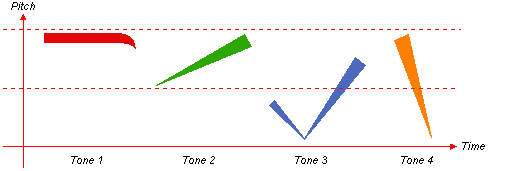| 书法家 | shū fǎ jiā | calligrapher |  |
| 缮校 | | Calligrapher |  |
| 书名 | shū míng | name of a book / reputation as calligrapher |  |
| 苏轼 | Sū Shì | Su Shi (1037-1101), aka Su Dongpo 蘇東坡|苏东坡[Su1 Dong1 po1], Song dynasty writer, calligrapher and public official, one of the Three Su's 三蘇|三苏[San1 Su1] and one of the Eight Giants of Tang and Song Prose 唐宋八大家[Tang2 Song4 Ba1 Da4 jia1] |  |
| 苏东坡 | Sū Dōng pō | Su Dongpo, another name for Su Shi 蘇軾|苏轼 / (1037-1101), northern Song writer and calligrapher |  |
| 手笔 | shǒu bǐ | sth written or painted in one's own hand / (of a writer, calligrapher or painter) skill / style / hand / (fig.) style shown in spending money, handling business etc / scale |   |
| 书画家 | shū huà jiā | calligrapher and painter |  |
| 王羲之 | Wáng Xī zhī | Wang Xizhi (303-361), famous calligrapher of Eastern Jin, known as the sage of calligraphy 書聖|书圣 |  |
| 李斯 | Lǐ Sī | Li Si (c. 280-208 BC), Legalist philosopher, calligrapher and prime minister of Qin kingdom and Qin dynasty from 246 to 208 BC |  |
| 曹丕 | Cáo Pī | Cao Pi (187-226), second son of Cao Cao 曹操, king then emperor of Cao Wei 曹魏 / from 220, ruled as Emperor Wen 魏文帝, also a noted calligrapher |  |
| 曹植 | Cáo Zhí | Cao Zhi (192-232), son of Cao Cao 曹操, noted poet and calligrapher |  |
| 黄庭坚 | Huáng Tíng jiān | Huang Tingjian (1045-1105), Song poet and calligrapher |  |
| 颜真卿 | Yán Zhēn qīng | Yan Zhenqing (709-785), a leading calligrapher of the Tang Dynasty |  |
| 米芾 | Mǐ Fú | Mi Fu (1051-1107), Song poet and calligrapher |  |
| 龚自珍 | Gōng Zì zhēn | Gong Zizhen (1792-1841), Chinese man of letters, calligrapher and poet |  |
| 柳公权 | Liǔ Gōng quán | Liu Gongquan (778-865), Tang calligrapher |  |
| 虞世南 | Yú Shì nán | Yu Shinan (558-638), politician of Sui and early Tang periods, poet and calligrapher, one of Four Great Calligraphers of early Tang 唐初四大家[Tang2 chu1 Si4 Da4 jia1] |  |
| 曹操 | Cáo Cāo | Cao Cao (155-220), famous statesman and general at the end of Han, noted poet and calligrapher, later warlord, founder and first king of Cao Wei 曹魏, father of Emperor Cao Pi 曹丕 / the main villain of novel the Romance of Three Kingdoms 三國演義|三国演义 |  |
| 张旭 | Zhāng Xù | Zhang Xu (probably early 8th century), Tang dynasty poet and calligrapher, most famous for his grass script 草書|草书 |  |
| 书迹 | shū jì | extant work of a calligrapher |  |
| 李英儒 | Lǐ Yīng rú | Li Yingru (1913-1989), calligrapher and writer, author of many novels about the war as seen by the communists |  |
| 杨凝式 | Yáng Níng shì | Yang Ningshi (873-954) calligrapher of the Five Dynasties period |  |
| 润格 | rùn gé | (old) scale of fees charged by a painter or calligrapher |  |
| 王著 | Wáng Zhù | Wang Zhu (-c. 990), Song calligrapher and writer |  |
| 祝允明 | Zhù Yǔn míng | Zhu Yunming (1460-1526), Ming dynasty calligrapher |  |
| 祝枝山 | Zhù Zhī shān | Zhu Zhishan (1460-1526), Ming calligrapher and poet, one of Four great southern talents of the Ming 江南四大才子 |  |
| 笔替 | bǐ tì | (poorly paid) ghostwriter or substitute calligrapher |  |
| 蔡襄 | Cài Xiāng | Cai Xiang (1012-1067), Song calligrapher |  |
| 袁桷 | Yuán Jué | Yuan Jue (1267-1327), Yuan dynasty writer and calligrapher |  |
| 锺繇 | Zhōng Yáo | Zhong Yao (151-230), minister of Cao Wei 曹魏 / and noted calligrapher, said to have developed the regular script 楷书 |  |
| 冯武 | Féng Wǔ | Feng Doubo or Feng Wu (1672-), calligrapher of the Ming-Qing transition / also called 馮竇伯|冯窦伯[Feng2 Dou4 bo2] |  |
| 冯窦伯 | Féng Dòu bó | Feng Doubo or Feng Wu (1672-), calligrapher of the Ming-Qing transition / also called 馮武|冯武[Feng2 Wu3] |  |
| 钟繇 | Zhōng Yáo | Zhong Yao (151-230), minister of Cao Wei 曹魏[Cao2 Wei4] and noted calligrapher, said to have developed the regular script 楷書|楷书[kai3 shu1] |  |
| 董阳孜 | Dǒng Yáng zī | Grace Tong (Tong Yangtze) (1942-), Taiwanese calligrapher |  |








































